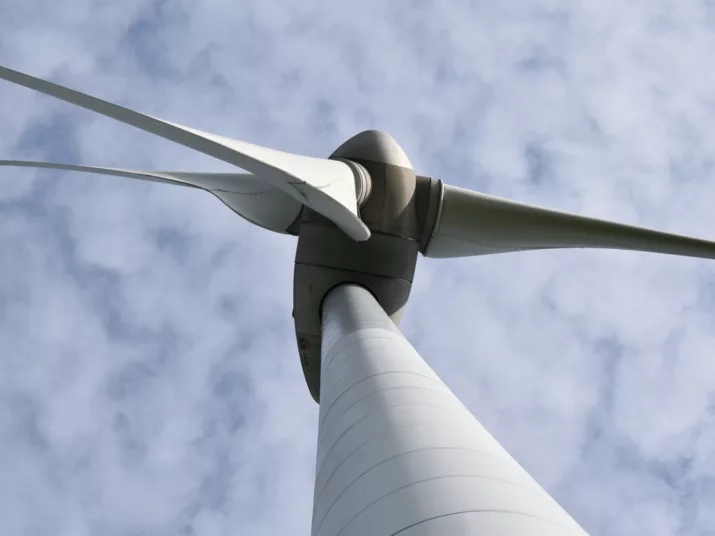
What happens when the wind turbine stops? Then we are still far from being out of light, says energy expert Weert Canzler. Image by JacLou DL on Pixabay
THINKING SPACE NATURE
RESERVATIONS AGAINST GREEN ENERGIES
Renewable energy sources are booming. But they’re still facing a lot of headwind and scepticism. Some myths – as well as old certainties that have long crumbled – remain persistent. Let’s get to the bottom of these reservations that some people still have.

What happens when the wind turbine stops? Then we are still far from being out of light, says energy expert Weert Canzler. Image by JacLou DL on Pixabay
MYTH 1: NO SUN, NO WIND? THEN THE LIGHTS WILL GO OUT!
That’s what lots of people think. However, in these times of digital networking and control, there’s no danger whatsoever that people with solar or photovoltaic systems will suddenly find themselves in the dark because the sun’s not shining or the wind’s not blowing. Increasingly accurate weather forecasts enable reliable predictions and precise planning of wind or solar power generation. On top of that, what prevents power outages is that having a lot of small power plants increases the likelihood of a reliable energy flow – because electricity is generated in different ways and in different places.
MYTH 2: RENEWABLE ENERGIES ENSURE THAT ELECTRICITY PRICES ARE GOING TO KEEP RISING – EVEN IN THE FUTURE.
No. According to a study by the energy transition company Green City, inflated prices for alternative energies will soon be a thing of the past. [1] That’s because the spot electricity price, which is one of the factors determining the electricity price – alongside the EEG levy (a fee collected by the German government on the basis of the Renewable Energies Act) and the grid fees – is dropping all the time. The reason for this is the large amount of cheap wind and solar power, which is resulting more and more often in oversupply. According to the study, by 2020 at the latest, price differences between energy from conventional sources and energy from natural sources should cease to exist.
MYTH 3: SOLAR ENERGY? IT’S ONLY WORTHWHILE IN THE DESERT.
That’s simply not true. The Renewable Energies Agency (AEE) did the maths: the roof area of a single-family house usually provides sufficient space for a photovoltaic system to cover the annual electricity demand of a family in Germany. After all, in Central Europe, just ten square metres of solar collectors supply a fifth of the heat required by an average single-family house. In any case, decentralised energy supply is more worthwhile than obtaining power from a solar plant in the desert via overseas transmission lines – transfer losses included. [2]
MYTH 4: BIOMASS IS CRAP – AND WON’T MAKE THE ENERGY SUPPLY MUCH CLEANER.
Yes, it will. After all, for a start, biomass is not just dung, but contains all kinds of plant and animal residues – from kitchen waste to wastewater from sewage treatment plants to slurry from farms. To a limited extent, we even rely on biomass for energy generation, for example, during times when wind and sun are scarce. However, the cultivation of biomass – such as from maize or sugar beet – needs to be limited. It mustn’t be allowed to take up land that’s required for food production.
And what about the way our landscape is being destroyed by wind turbines? Can a multitude of micro-power-plants secure our electricity grid? In our video interview, social scientist Weert Canzler provides the answers to these questions.